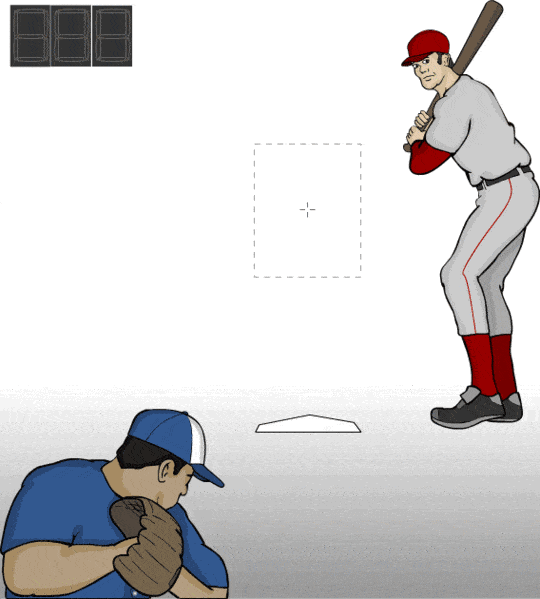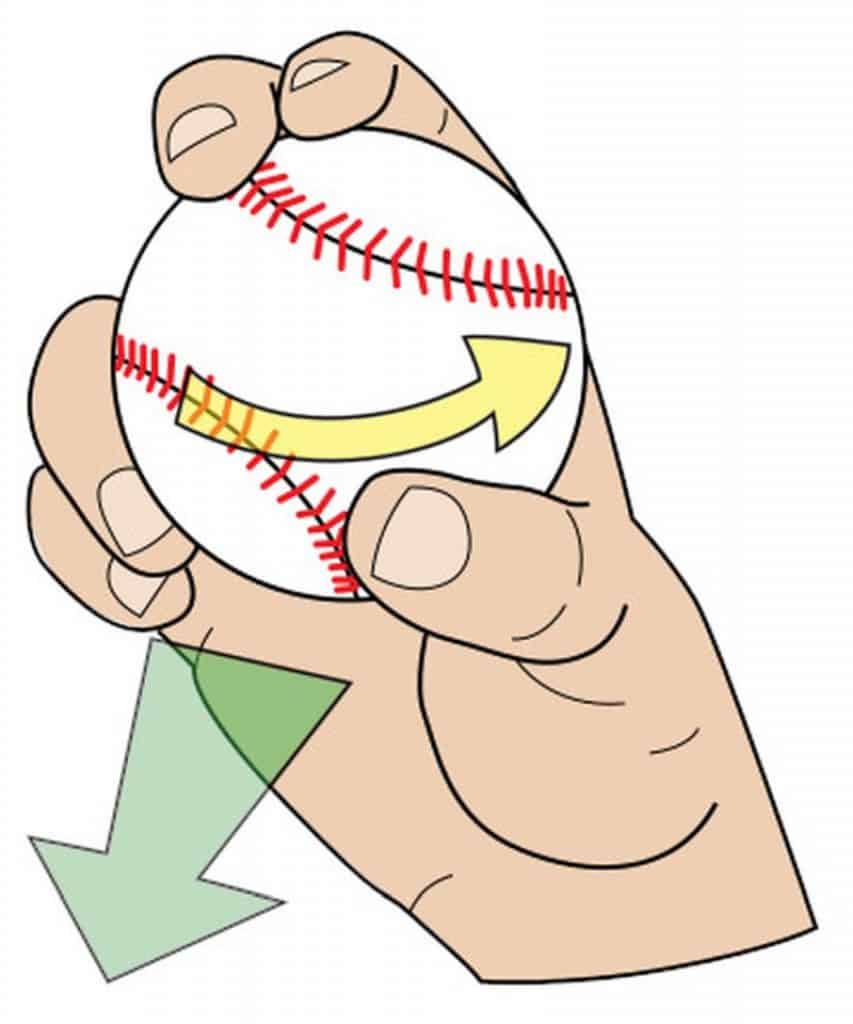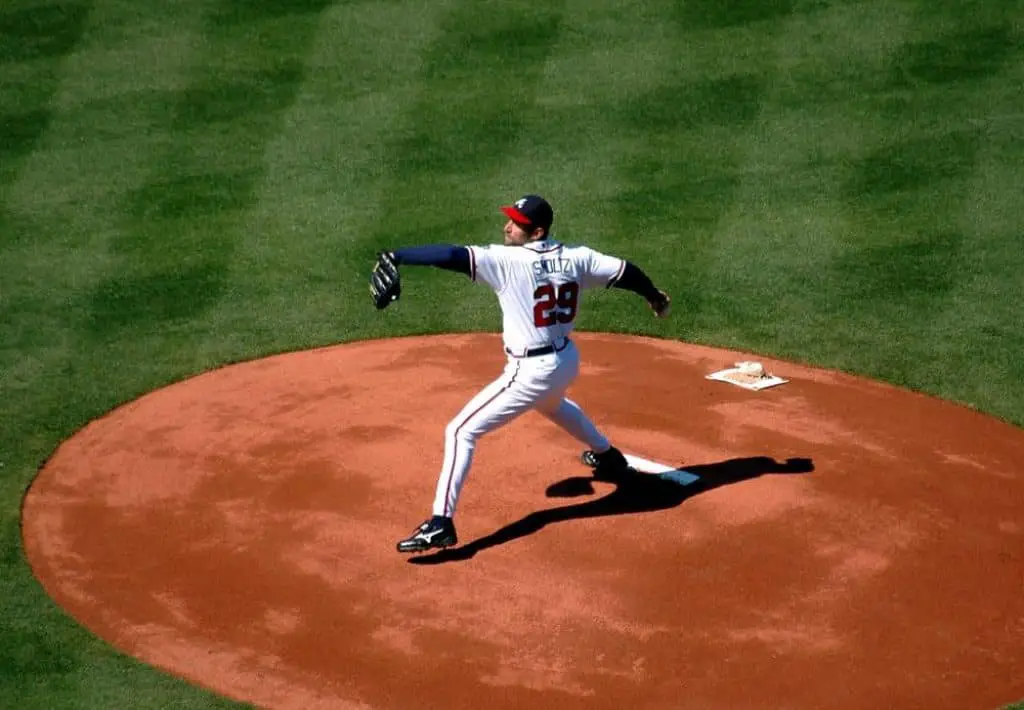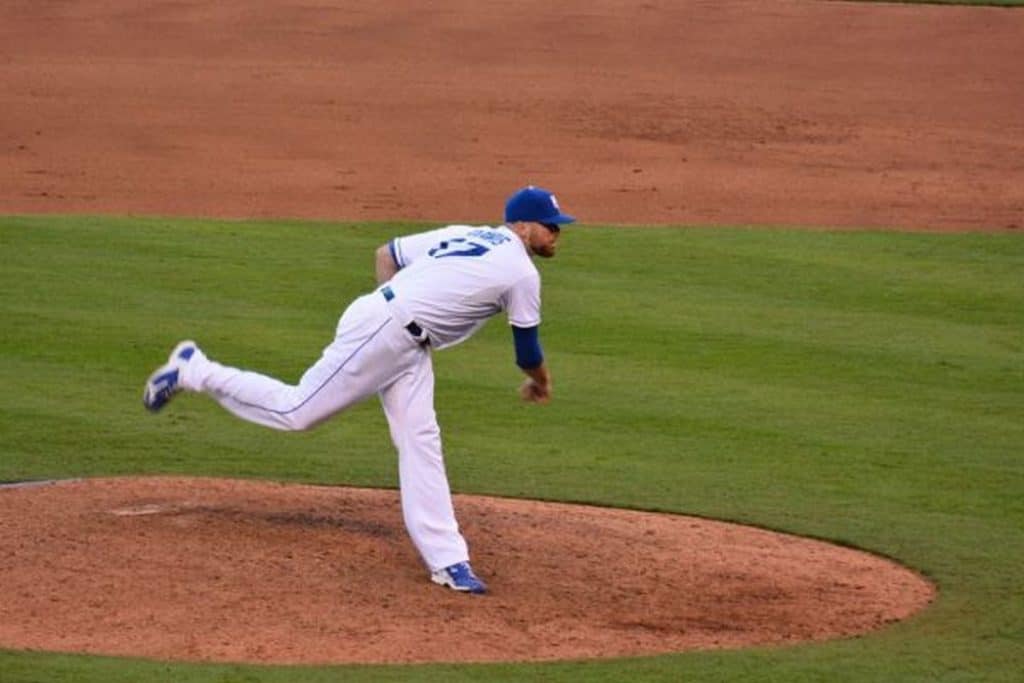Cutter Vs. Slider – What’s The Difference?
What is the primary difference between a novice baseball fan and a knowledgeable baseball enthusiast?
The former will presume a slider and cutter are the same, whereas a knowledgeable baseball fan will know that that’s not true!
There’s an entire debate on cutter vs. slider, and knowing the difference between these two is essential to be a pro baseball player!
I know you have probably searched a lot and are only confused because of the complicated terminologies and explanations online.
Don’t worry; as always, I am going to help you understand everything in a more straightforward way!
Table of Contents
What Is A Cutter?

Cutters are also sometimes popular as cut fastballs, so you can look out for both names.
In the baseball glossary, a cutter is a unique fastball type. It approaches the home plate and, as it does so, it deviates from the pitcher.
When right-handed pitchers throw a cutter to left-handed hitters, cutter balls move very quickly towards the hitters’ hands.
The same happens when left-handed pitchers throw to right-handed hitters. A cutter pitch can be anywhere between a four-seam fastball and a slider.
Usually, cutters are thrown much faster than sliders, but they have more movement than typical fastballs.
Some pitchers also use cutters to make sure that hitters cannot expect regular fastballs.
How Do You Throw A Cutter?
The most prevalent technique to throw a cutter is this:
The player uses the four-seam fastball grip on the baseball, placing it slightly away from the center of the hand.
Batters that hit cutter pitches typically only achieve a very soft contact.
It happens because the ball continuously stays away from the sweet spot on the baseball bat and never hits it right there on the target.
This cutter ball is usually slower than the four-seam fastball (precisely 2 to 5 mph slower).
According to PITCH f/x standards, to consider a pitch as a cutter pitch, it must be thrown by a pitcher who is right-handed with a speed of 88.6 mph.
An average two-seam is typically 90.97mph.
What Is A Slider?

A slider is sometimes also referred to as snapper or a yakker in baseball terms.
It is very similar to a cutter, but there are some significant differences between the two, which I will specify later.
Sliders, in baseball, are breaking ball pitches.
What’s unique about them is that they move downward and laterally through the hitting zone. Throwers are supposed to use less speed compared to fastballs yet greater than curveballs.
The break on this pitch is shorter than a curveball, and its release technique lies between a fastball and a curveball.
How Do You Throw A Slider?
Sliders have a grip similar to that of two-seam fastballs.
It means that the index finger and the middle finger spread across the ball, along the two wider seams.
The unique part about this grip is that these fingers lie away from the center, ever so slightly, towards the outer part of the baseball.
It almost looks like you’re holding the ball’s outside third portion.
The thumb is typically tucked underneath, and pinky and ring fingers are towards the side of the ball.
All the pressure is to be applied using the middle finger and the thumb.
However, the most important thing about throwing a slider is that the faster you throw it, the more effective it is.
Sliders break late when they are very close to the batters. This factor makes the slider baseball pitch extremely effective.
Cutter Vs. Slider – What Are The Differences?
Now that you and I have established the basics of sliders and cutters, let’s talk about the center of this discussion: cutter vs. slider.
What are their differences, and how are they set apart from each other?
Here’s how:
Pitch Breaks
There are several significant differences between the break of a slider and a cutter pitch.
For example, sliders have a horizontal and downward break. In contrast, cutter pitches are generally harder, and they break in one direction.
However, they break very late, as I mentioned earlier.
As significant as this difference is, it is only possible to spot it if you are a professional player or a knowledgeable baseball enthusiast.
To all the others, these pitches look very similar.
Arm Angels
The infamous baseball right-handed pitcher Roger McDowell has something important to say about the differences between a cutter and a slider.
The professional player says that sliders typically involve a lower arm angle.
Cutters, however, can be thrown from both lower and higher arm slots according to the preference and comfort zone of the player.
So, basically, you cannot throw a cutter with any arm slot you want.
Depth
Cutters and sliders have very similar shapes. However, their depth is significantly different.
As a rule of thumb, cutters lack depth, whereas sliders have plenty of it.
Speed
Last but not least is the throwing velocity or speed.
And even though I have talked about this above, I still want to mention it because it’s a significant difference between the two pitches.
To be precise, cutters are usually thrown with a higher velocity compared to sliders.
However, their velocity is far less than a fastball. And this way, it is differentiated from both.
Frequently Asked Questions About Cutters

Is A Cutter Safe To Throw?
Cutters are tricky and complex, but they are effective. So, a player must efficiently learn how to throw a good cutter.
Once they have mastered the cutter-ball skill, it is safe to attempt on the field. In fact, it is a great way to become a professional player and gain a good reputation.
That being said, there is such a concept known as “Accidental Cutters,” and these can be dangerous.
Players sometimes throw a cutter accidentally, and throwing below 85 mph might not witness an effective pitch.
When a player accidentally throws a cutter or cuts a ball, it means that there was a significant fault in their hand action, grip, or body mechanics.
As a result, the embarrassment and drawback of this accidental cutter is quite the opposite of the positive reputation gained by an effective cutter thrown on the field.
What Age Should You Throw A Cutter?
According to professionals, specialists, and baseball experts, the best time for a player to learn how to throw a cutter is when they are about ten years old.
At this stage, their hands are optimally big, and they can use three fingers to throw the ball instead of four.
For some people, this time duration also varies from 8 to 12 years, depending on the child’s physique and growth rate.
When Should A Player Throw A Cutter?
Cutters are usually helpful when a pitcher wants the ball to have a weak contact with the bat.
It looks very similar to a fastball when it is thrown. However, it breaks significantly late and does a good job.
Remember how I mentioned that cutters lack depth?
Here’s why that fact is important:
It means that the ball has a weak contact with the bat and breaks after the hitting player has already decided how to swing his bat.
This way, the pitch almost always misses the bat’s sweet spot.
Frequently Asked Questions About Sliders

Is A Slider Safe To Throw?
Sliders are comparatively easier than cutters and are much safer to throw.
In fact, players at beginner, college, and pro levels attempt to use sliders on the field. They are much less complicated and do not have a lot of risks involved.
Plus, they have a shorter break which is why they are an easier option for strikes.
However, in terms of physical safety, one might rightfully think that sliders have some drawbacks.
Many players and young pitchers have reported having arm pain after practicing sliders or attempting them on the field.
What Age Should You Throw A Slider?
Since the technique involves a lot of arm work and has a high incidence of pain and fatigue, it is recommended that players should not be younger than 14 to 15 years of age when they start throwing sliders.
By this time, the recruiting process usually starts in all colleges. So, it is an excellent phase for them to start practicing this technique.
When Should A Player Throw A Slider?
Since sliders look very similar to fastballs and break before they reach the home plate, players usually use this technique when they believe the hitter expects a standard fastball.
It is an excellent way for them to play with the psychology of the hitter and use it against him. The sudden change in the shape and speed of the pitch confuses the hitter.
Ultimately, it helps the opposite team win!
In Conclusion
So, you see, there’s a clear difference between cutters and sliders.
And now that you know these facts and information, you’ll always win the cutter vs. slider argument!
Understanding these differences will also help you become a better player and coach other baseball athletes more effectively.
Remember, the difference between a novice and professional lies in the details!




